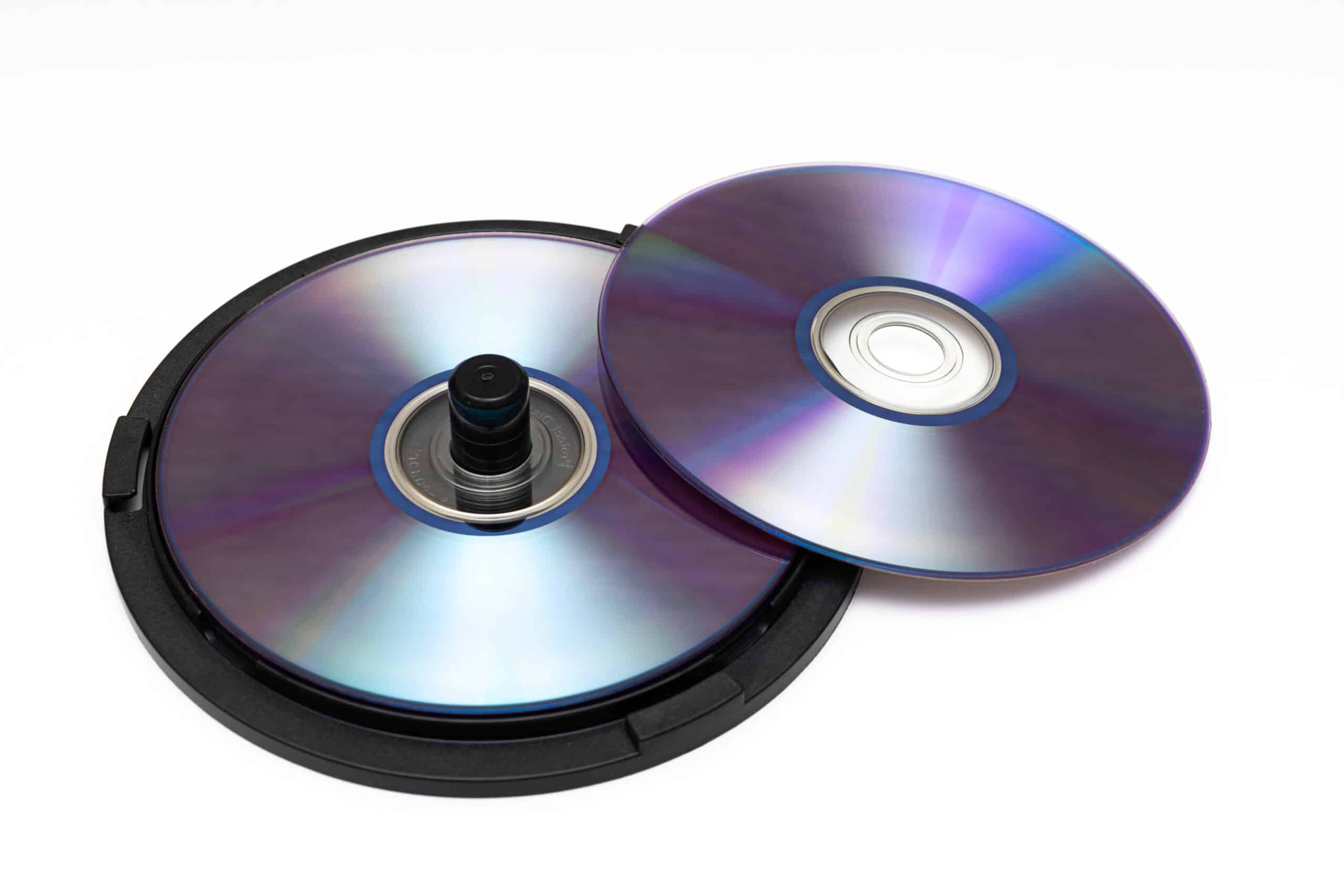CDs, DVDs, Blu-rays, 4K UHDs. It’s difficult to imagine a world without an extensive collection of discs on our shelves. That was the reality before LaserDisc, though.
As the first instance of a commercialized disc storage medium, LaserDisc took the size of a vinyl record and the function of a DVD and made them into one. However, LaserDisc was not nearly as successful as either of these home media formats.
Quick Facts
- Release Date
- 11/12/1978
- Original price
- $100
As a matter of fact, LaserDisc failed spectacularly. But, how could something like this happen to a product so state-of-the-art?
Let’s take a deeper look at the real reason behind LaserDisc’s failure.
The Significance of LaserDisc
LaserDisc was more than just the first commercialized disc storage medium. It offered a much higher quality than the competition namely VHS and Betamax. Not to mention, the technology used to create the LaserDisc served as the very foundation of the compact disc (CD), the DVD, the Blu-ray (BD), and the 4K UHD disc.
Beyond these technical specs, LaserDisc had several other appealing, even novel, features. The LaserDisc player’s transport mechanism would always obey user commands: pause, fast-forward, and fast-reverse commands. This differs from, say, DVD players, where the disc comes pre-loaded with “user prohibited options” that forbid users from skipping certain parts. Certain (maybe more nefarious) LaserDisc aficionados also appreciated the fact that LaserDiscs lacked any sort of anti-piracy measures.
Additionally, LaserDisc boasted some other significant features that hadn’t been seen before (or even since). For example, users could jump to any single frame on the disc by entering the frame number into the remote which is a lot more precise than a DVD’s scene selection feature. Damaged spots would be skipped right over, unlike a DVD, which will typically freeze in place when it encounters damage.
LaserDisc’s Popularity Among Cinephiles
It is worth mentioning, as part of LaserDisc’s significance, the popularity that this home media format had among movie fanatics. The biggest defenders of the format claimed thanks in part to the LaserDisc’s analog video signals, keeping it from being fully digital that the video quality on a LaserDisc was smoother and more film-like than a DVD.
Even though LaserDisc failed by the year 2000, there are still collectors of the format who insist on its quality and superiority to this day.
Going hand-in-hand with the preferred quality of LaserDisc was its unique ability to load up on special features. Special editions were not a thing before the LaserDisc, but are now a large part of the appeal of contemporary home media. Interviews, commentary tracks, deleted scenes, and behind-the-scenes never came with a home media release before the LaserDisc, but are now staples of video formats today.
Between 1978 and 1998, only about 2% of Americans had a LaserDisc player in their home. (Compare this to the 81% of American homes with a DVD player). Conversely, 10% of Japanese households had a LaserDisc player. In fact, LaserDisc was so popular in Japan that it continued to be produced in Japan even after its discontinuation in America.
LaserDisc Specs
| Name | LaserDisc, DiscoVision |
| Use | Home media |
| First Released | December 11th, 1978 |
| Type of Media | Optical disc |
| Encoding | NTSC, PAL |
| Physical Size | 30 cm disc (full-size), 20 cm disc (EP-size), 12 cm disc (CD-size) |
| Storage Capacity | 60 to 64 minutes per side (CLV discs), 30-36 minutes per side (CAV discs) |
| Read Mechanism | Laser |
| Write Mechanism | Laser, dye |
| Technical Standard | LaserVision |
| Initial Developer | Philips, MCA Inc., Pioneer Corporation |
| First Title on LaserDisc | Jaws (Steven Spielberg, 1975), released in 1978 |
| Last Title on LaserDisc | Bringing Out the Dead (Martin Scorsese, 1999), released in 2000 |
| Successor | DVD |
LaserDisc: The Complete History
While the LaserDisc didn’t debut until 1978, the technology had been around since 1963. Invented by David Paul Gregg and James Russell, this optical video recording technology on a transparent disc was patented in 1970 (and again in 1990 in its smaller, new, and improved DVD format).
MCA and Philips had jumped on the technological advancement before the patent had even come through, developing their own take on the disc in 1968 and 1969, respectively. Eventually, the two realized they were better as one and combined their efforts with the release of the videodisc in 1972.
Several key improvements to the quality, storage, and technology of the videodisc led to LaserDisc’s eventual debut in December 1978. This came a couple of years after the VHS and VCR and pre-dated the CD by several years, as well.
First sold under the name DiscoVision, the LaserDisc rebrand came after Pioneer Electronics took a majority stake in the format from MCA and Philips in 1980. For a handful of years after, Philips took over the manufacturing of LaserDisc players while MCA handled the discs themselves. Eventually, though, this collaboration tapered out in unison with the decrease in sales which were never all that great, to begin with.
Early Signs of Imminent Failure
It was more than just the unsuccessful collaboration of Philips and MCA that revealed the writing on the wall for LaserDisc.
Not only were the discs themselves as large as vinyl records, but they also weighed more than half a pound compared to a DVD, which weighs about half an ounce. This was perhaps the earliest sign for consumers that LaserDiscs might not be the most practical thing to have around the house.
Beyond this, they were remarkably expensive for home media in comparison to a VHS or a DVD. Your average LaserDisc would run you close to a hundred dollars (which, by today’s standards, is close to $350 when adjusted for inflation). Players were even more expensive. And, due to the weight of LaserDiscs, players were loud, too. The force it took to spin the disc made a kind of whirring noise that can be quite distracting for some viewers.
Then, there was the fact that LaserDiscs had to be turned over (and sometimes even switched out for a second disc) in the middle of the film. Because they could only store a maximum of 64 minutes per side, LaserDiscs would have to be flipped at least once. This was also an issue with VHS tapes but, with those, it was as simple as sticking a second tape in. Speaking of tapes, VHSs and VCRs had the advantage of being able to record television programs, while the LaserDisc could not.
Issues like crosstalk where two audio tracks would be picked up at once and laser rot where poorly manufactured early discs would decrease in quality from poor adhesive were other early signs that began to hint at LaserDisc’s eventual demise.

The Eventual Demise of the LaserDisc
Developed in 1995 and released in 1996, the DVD couldn’t have come onto the market at a more perfect time. As all these warning signs above suggested, the LaserDisc had begun its decline right as the DVD began its rise.
Despite its great quality and attractive special features when compared to the VHS, the sheer cost alone held LaserDisc from performing the way that it should have. This wasn’t the only factor that held LaserDisc from succeeding like its successor and predecessor, though.
Many consumers were confused by the LaserDisc’s similarity in name to the Videodisc, which more closely resembled a VHS tape. What’s more, manufacturers didn’t want to market blank LaserDiscs to compete with VCRs and their ability to tape television, which greatly hurt LaserDisc and gave VHS a key advantage. Combine this with the aforementioned high cost, and it’s easy to understand why LaserDisc failed.
Alas, just because it didn’t sell very well doesn’t mean it was a total failure.
Why LaserDisc Failed
The LaserDisc failed for a multitude of reasons. Price, size, physical defects, and increased competition from both VHS and DVD all played a part in why LaserDisc failed, with no one factor deserving complete credit for the video format’s obsoletion. It’s a classic example of the right idea executed in the wrong way.
Take the Sega Dreamcast, for example. It set the stage for the PlayStation 2 and the Xbox, though it wasn’t a success itself. Or, look at the Nintendo Virtual Boy, which failed tremendously in 1995 but predated the VR headsets we know and love today by over 20 years. It’s a scenario that’s been seen time and time again throughout the history of technological advancement, and LaserDisc is certainly no exception.
In the end, LaserDisc failed because of high costs for both the players and discs, performance issues between the loud players and rotting discs, the popularity and affordability of both the VHS and the DVD, and the inability to record television programs.
Today, you can find them for a couple of bucks or less at your local resale shop of choice. (They make great displays, like a vinyl album cover for movies). Some, if you can believe it, are even quite valuable.
Why Did the VHS and DVD Succeed?
VHS tapes and DVDs succeeded by inverting all the issues with LaserDisc that caused it to fail. VHS tapes were cheaper and more accessible, lightweight, and manageable, and they could record television to boot. DVDs were smaller and their players more affordable. They were also quieter, and they didn’t need to be turned over or switched out mid-film. Plus, DVDs still boasted the same kind of bonus features a LaserDisc could.

Quality was a major discrepancy of the VHS and DVD compared to LaserDisc but, as we’ve seen time and time again, this sort of thing doesn’t matter all that much to consumers. There’s a reason why DVDs continue to sell better than Blu-rays and 4K UHD discs: They’re still the preferred and most affordable home media format, even if the quality isn’t the best it can be.
In the end, the VHS and the DVD succeeded the LaserDisc because of one word: convenience. They were easier to store, rent out, or loan to a friend, make and distribute, watch, use, and afford. The list goes on and on, with each reason adding more valid arguments against the LaserDisc.
The image featured at the top of this post is ©iStock.com/Oleg Opryshko.

